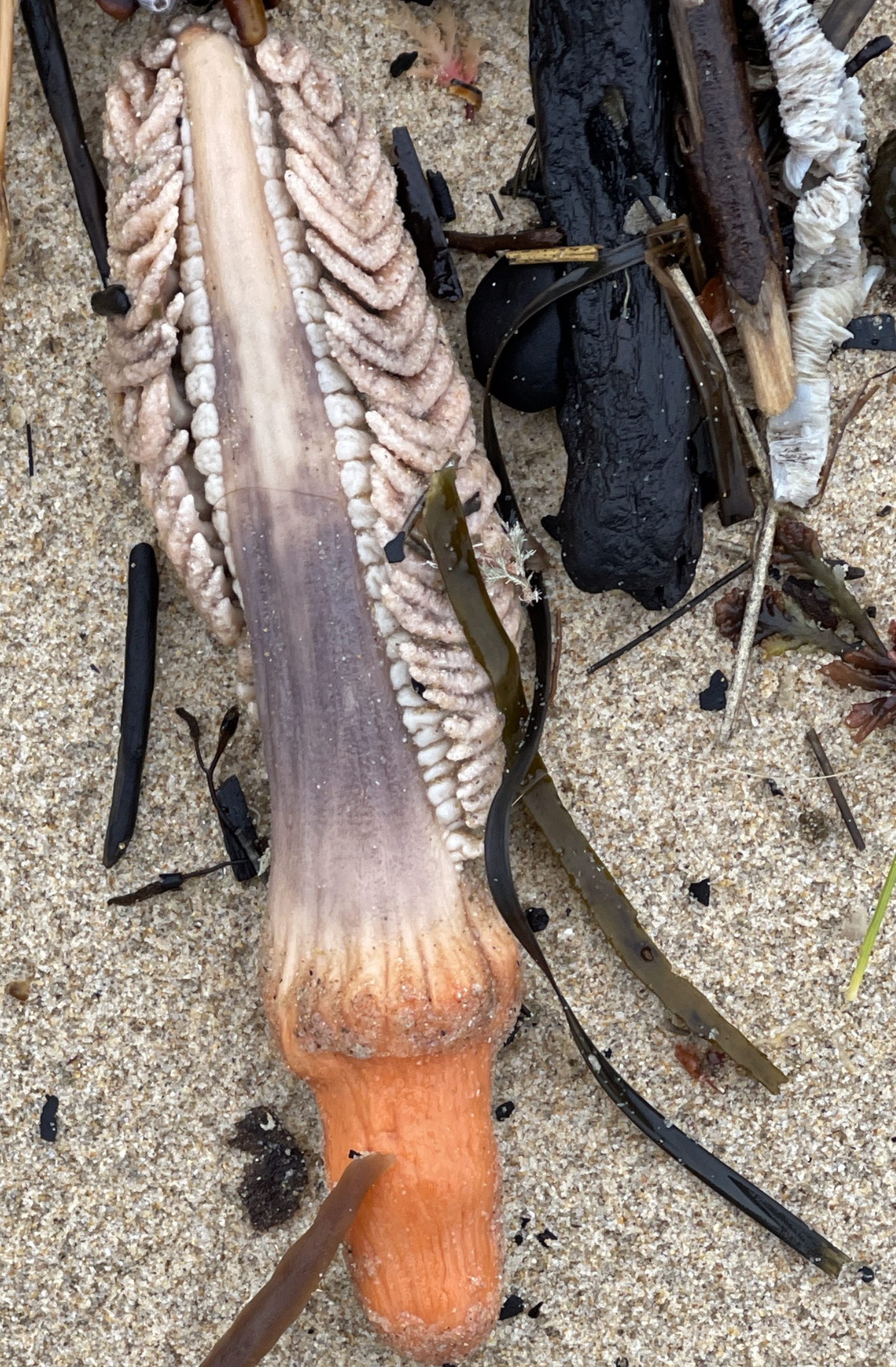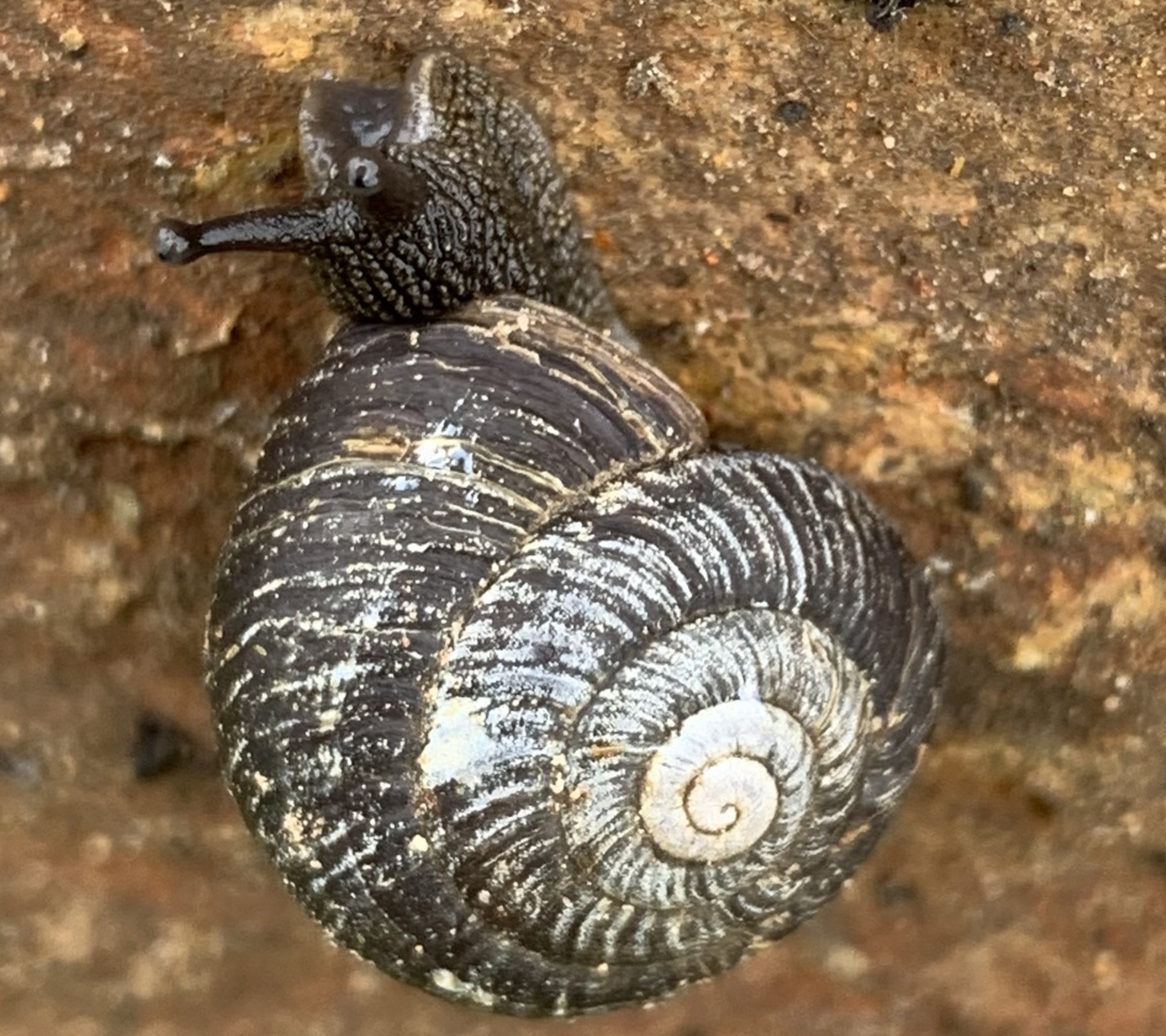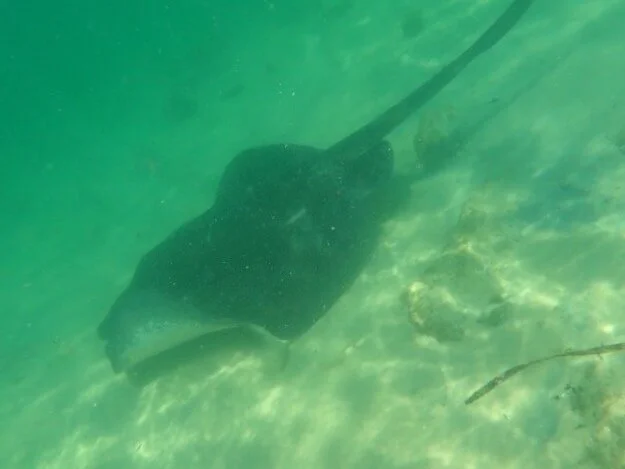Ambling Along the Anabranch
NATURE STORIES FROM ISOLATION
by Matthew Higgins
April, 2020
I have the good fortune presently to live near the Bega River Anabranch, and over the past year or so I have been starting to get to know this striking feature of the Bega Valley.
Morning mist along the Anabranch (foreground) and the Bega River (middle ground), with Dr George Mountain in the distance, December 2018.
The Anabranch, or side channel to the main Bega River, begins almost opposite the junction of the Bega and Brogo Rivers and extends as far as Parbery Creek where it seems to follow the creek back into the main river channel. Depending on season and rainfall, it is a series of large ponds and reaches rather than a continuous stream. Though I am no geomorphologist I consider that it is possible the Anabranch was formed by big floods coming down the Brogo, and with the Bega not able to accommodate the water, the floods pushed through the Bega’s south bank and gouged out a new channel paralleling the main one.
A perfect morning for wildlife-watching on the Anabranch, 27 April 2020.
Platypus
My rambles along the Anabranch have provided many opportunites for wildlife observation and my earlier story on this website, ‘Platypus and the Anabranch’ gave an indication of the richness of this waterway. I do not want to repeat what was written in that story, but I’d like to add some further material about the Platypus in the channel. At the time of their disappearance following the Feburary 2020 floods I speculated that either the chemistry of the ash-laden water had affected the Platypus food supply of invertebrates and possibly been fatal to the Platypus, or that the Platypus had taken the opportunity offered by the now expanded waterway (the floods had changed it from a chain of ponds to a flowing stream connected once more to the Bega River) to move and find new territories, food sources and mates. The return of the Platypus in April showed that the latter more fortunate outcome was what happened.
Welcome back: a Platypus surfaces near the bank of the Anabranch, seen through Casuarina branches, 22 April 2020.
There is some evidence suggesting that when the Platypus made their temporary move they went upstream rather than down. At the time of the floods an observer (not me) reported seeing an animal in the Anabranch pond beneath the Tarraganda Lane Bridge. I had never seen a Platypus there during my previous fieldwork. This area is upstream from the three ponds where I had had all of my previous sightings. Could this have been an animal moving upstream in response to the flood current? The Platypus that have returned (numbers are not yet up to their pre-flood level, by the way) seem to have been populating the previous three pond areas from upstream to down - they first appeared in the upper pond, then the middle pond, but are not yet in the downstream one. Further, during my hunt for Platypus prior to their reappearance in the Anabranch I did a (admittedly rather short) walk along the Bega River downstream of the Anabranch and saw no animals. So it is interesting to think that the movement of these animals may have been upstream in response to the flood current stimulus. Upstream would have taken them to the Bega River and also the lower Brogo; a downstream movement would only have led to the Bega, and the point where fresh meets salty water is not far down from there; a barrage currently keeps salt water further downstream than naturally would be the case.
The flooding Anabranch, not far from its start at the Bega River, submerging Bega’s East Street causeway, 11 February 2020. Residents and their dogs took in the spectacle
Why come back to the Anabranch anyway? I think that it is a richer and more diverse habitat than the Bega River. The river is for long sections very shallow and sandy-bottomed, without much cover, nor diversity as far as likely prey environments are concerned. Admittedly there are deeper and more complex sections of the river as well, where cover like large submerged trees can be found.
The Anabranch has high earth banks, deep pools, and an intermittent amount of streamside cover in the form of overhanging and submerged trees. Its water is less clear than the shallow river and offers better cover from possible aerial predators like Sea Eagles. Eagle predation of Platypus has been reported anecdotally (see https://australianmuseum.net.au/learn/animals/mammals/platypus/), and given that the Naturemapr element of this Atlas of Life website includes a photo of a Sea Eagle taking a Little Penguin near North Tura, I think that these raptors could take a Platypus without too much difficulty, as a Little Penguin weighs almost the same as a female Platypus.
Returning to the Anabranch during receding water levels would have required the Platypus to go overland some of the way. Platypus do move over the ground (as reflected by the photo in my 2018 book Bold Horizon, of John Dowling at Brindabella Homestead with a Platypus; the animal was found on a road). But they are more vulnerable to predation then, for example by foxes. We have seen foxes from time to time in dairy paddocks adjoining the Anabranch.
A fox moving across a dairy paddock adjacent to the Anabranch, March 2019.
Raptors
The Bega River valley, inclusive of the Anabranch, is a happy hunting ground for many raptors (we have seen over a dozen species), but especially ones that haunt waterways.
A juvenile (and rather gaunt) Sea Eagle scans for prey above an Anabranch pond, April 2020.
Whistling Kites and Sea Eagles are seen frequently. Along the Anabranch I have often encountered Whistling Kites perched in waterside trees and their calls as they circle overhead are almost everpresent. Recently I disturbed a perching juvenile Sea Eagle which made an incredibly loud and shrill alarm call as it made off, a very different call to the goose-like ‘honk’ of adult birds.
One unfortunate outcome of the floods is that the Carp which were previously in the river are now also to be seen in the Anabranch. I am hoping that the kites and eagles might serve to control and maybe eradicate this feral fish population in the channel.
Bega's Glebe Wetland ultimately runs into the Anabranch via a small gully. This wetland is well known as a seasonal Grey-Headed Flying Fox camp and we have seen both Sea Eagles and Wedge-tailed Eagles patrolling the wetland for flying foxes. Indeed, as interpretive text panels at the wetland point out, Great Egrets nest among the Flying Foxes in order to get some protection from raptor predation themselves; they sort of hide in the cacophany of the ever restless Flying Fox camp, making themselves a less conspicuous target.
A Wedge-tailed Eagle perches close to (probably fairly nervous!) Flying Foxes at Glebe Wetland. The outlet creek from the Wetland is a tributary of the Anabranch.
During my Anabranch walks I have had the good fortune to see other raptors, including Kestrels, Black-shouldered Kites, Grey Goshawks and Brown Falcons. Interestingly the latter two used, at different times, the same power pole as a temporary perch; in the open fields along the valley floor a power pole is a good surveillance point for a bird of prey.
Waterbirds
The Anabranch waterway is of course a place for waterbirds. Various species of ducks, cormorants, darters, coots, grebes, herons, spoonbills, kingfishers and others can be encountered. Pelicans sometimes fly overhead too.
One particularly nice experience has been to witness over a couple of months the development of several Australasian Darter families in bankside willows down below the South-East Regional Hospital.
A strikingly-marked male Darter with begging chicks on the nest, on the Anabranch not far from the Hospital, March 2020.
I have seen the chicks develop from almost pink birds to fledglings. Even when quite large, chicks are still covered in a soft down before full plumage develops. The high-pitched, quickly repeated begging call is very distinctive and a good alert to the young Darters’ presence. One can only pity the parents (like any parent birds) being faced with that all day! These sightings have also provided a lovely opportunity to see in detail the very attractive markings of the male and female adults, and how different they are.
Reptiles
Gippsland Water Dragons and Long-necked Turtles can be seen without difficulty in the Anabranch waters. A sudden ‘plop’ is a sign of a water dragon having spied me already and made its escape by jumping from an overhanging branch into the water and swimming away to safety.
A semi-submerged Gippsland Water Dragon, January 2020.
Turtles (which I grew up calling tortoises - confusing!) usually float with only their face protruding above the surface of the water, looking directly at you. Sometimes you can be lucky to see one out of the water sunning itself on a log.
The face of an inquisitive Long-necked Turtle peers from Anabranch waters, October 2019.
A riverine environment like the Anabranch is a good place to find Red-bellied Black Snakes. I have spotted beautiful specimens here. At one place that I call the Isthmus, I have seen a Red-belly several times and, given that the sightings were all within an area of only a few square metres, I am confident that it is the same individual each time. At another spot one morning a larger Red-belly was sunning itself on an east-facing patch of dead, low grass - an excellent place to absorb solar energy in a bankside landscape dominated by tall, shadowing (and very wet in the mornings) pasture grass which makes solar access difficult for snakes.
A close view of the head of the Red-bellied Black Snake at the Isthmus, November 2019. Some of the red scales can be seen. Flattening of the body is not necessarily a sign of threat but is often the way a snake gains maximum solar exposure. Many other reptiles (eg skinks, goannas, dragons) do this body-flattening posture for the same reason.
Bankside vegetation
Of course the Bega Valley is a cultural as well as a natural landscape. It has seen much change since European settlers entered the area in the nineteenth century.
Insect life along the Anabranch includes butterflies like this male Monarch, feeding on nectar from a thistle.
Numbers of introduced plants have joined the native ones along the waterways. It is great that magnificant native Casuarinas - some of the biggest I have ever seen - still line the Bega River, though with many weed trees, shrubs and smaller plants there as well. Along the Anabranch, trees of any sort are sparser and introduced species like willows are fairly common in places. But a few Casuarinas are to be found too, thankfully. Some waterbirds have adapted to the willows, making nests there, and a number of dead trees are favoured perching places for cormorants, darters and raptors.
Cows!
Although this website is about the natural environment and predominantly native species, I cannot finish this little story without saying something about the Anabranch’s bovine community.
My curious companions along the Anabranch.
The Bega valley is a dairying economy (home of 'the famous' Bega Cheese) and paddocks bordering the Anabranch, and of course the river, contain dairy herds particularly Friesians. These animals are incredibly curious and love to trot along behind me and then silently stand and watch me as I scan the waterway for my birds and animals. But although they allow you to approach within a few metres, any closer than that and the cows or heifers will suddenly kick their heels in the air and race away, only to return and watch me shortly after, once again. There are also beef breeds (Angus, I’d guess) and while they are more flighty they too show a curiosity about this solitary human visitor that ventures along the edge of their pastures.
(With thanks to Stephanie Haygarth)
All photos by Matthew Higgins
If you have a story to tell about life in your part of the Atlas of Life region, please consider sending us a Creature Feature story. Contact Atlas of Life.





























